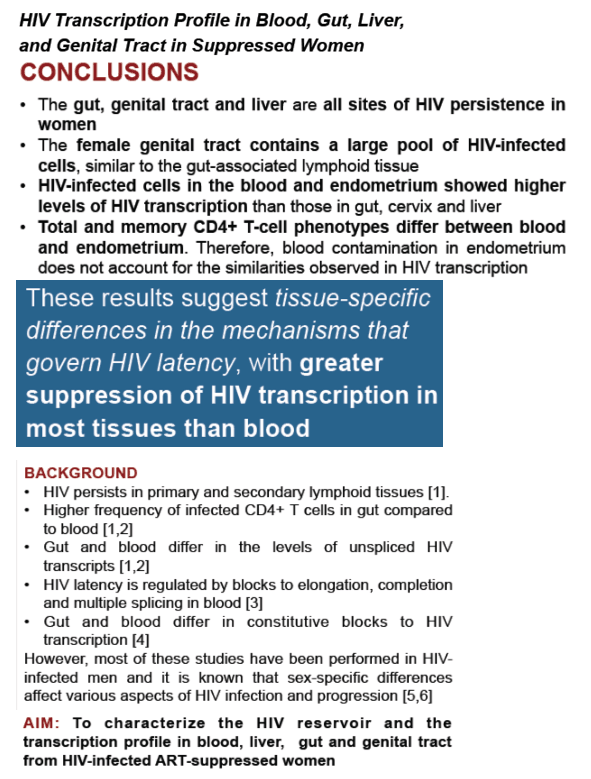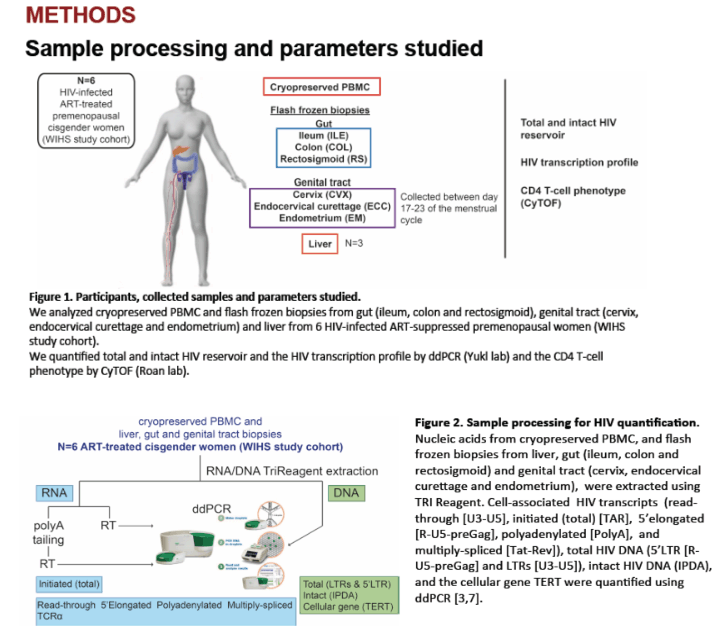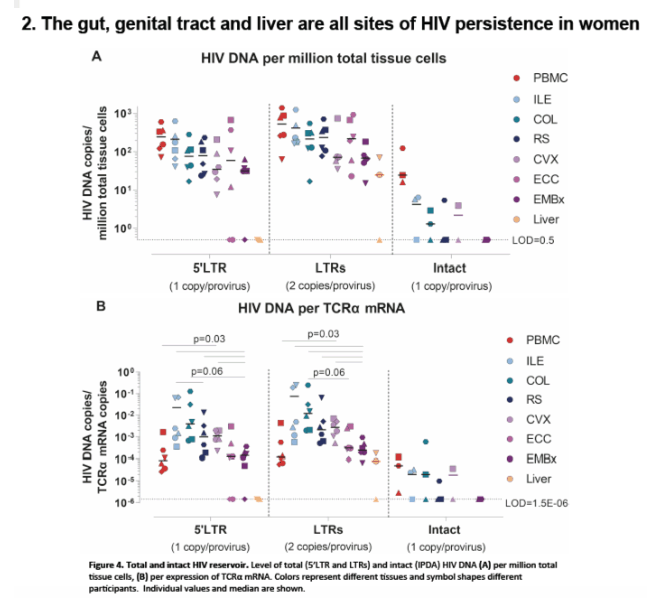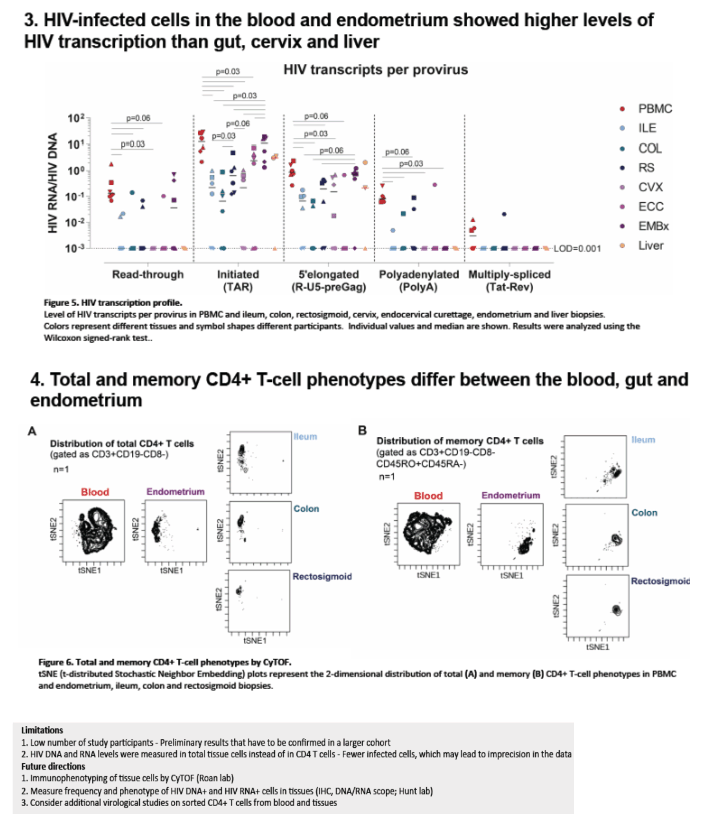 |
 |
 |
| |
HIV TRANSCRIPTION PROFILE IN BLOOD, GUT, LIVER,
AND GENITAL TRACT IN SUPPRESSED WOMEN
|
| |
| |
CROI 2020
Reported by Jules Levin
Sara Moron-Lopez1, Grace Xie2, Peggy Kim3, Joseph K. Wong3, Jennifer C. Price1, Najwa Elnachef1, Ruth Greenblatt1, Phyllis Tien1, Nadia R. Roan2, Steven A.
1University of California San Francisco, San Francisco, CA, USA,2Gladstone Institutes, San Francisco, CA, USA,3San Francisco VA Medical Center, San Francisco, CA, USA
Abstract Body:
Sex-specific differences affect various aspects of HIV infection. However, few studies have quantified levels of HIV infection or expression in tissues from women. Here, we measured the extent of HIV infection and progression through the HIV transcriptional blocks in blood, gut, liver, and genital tissues from HIV-infected ART-suppressed women.
Peripheral blood mononuclear cells (PBMC), liver, gut (ileum, colon, rectosigmoid), and genital tract biopsies (cervix, endometrium), and endocervical curettage (ECC) samples were collected from 5 women with plasma HIV RNA<200 copies/ml (median 10.4 years). Total and intact (IPDA) cell-associated HIV DNA and levels of read-through, initiated (TAR), 5’elongated, polyadenylated, and multiply-spliced HIV transcripts were measured by ddPCR. Phenotyping of immune cells was conducted by CyTOF. Results were analyzed using the Wilcoxon signed-rank test.
Total HIV DNA was detected in all tissues, with levels being comparable between the gut, liver and genital tract tissues. Intact HIV DNA was detected in PBMC, ileum, colon and cervix. HIV transcriptional initiation (TAR RNA per provirus) tended to be higher in PBMC and endometrium than in ileum, colon, rectosigmoid, cervix, and ECC (all p=0.06), and higher in rectum than either ileum or colon (p=0.06). Likewise, levels of elongated HIV transcripts per provirus were comparable in PBMC and endometrium, but higher than the gut and cervical samples (p=0.06). Polyadenylated HIV transcripts were detected in PBMC from all 5 individuals but were rarely detected in the tissues. Multiply-spliced HIV transcripts were detected in PBMC from 2 of 5 individuals, but not detected in any tissue.
The phenotypes of CD4+ T cells were distinct between the blood, genital tract, and gut.
The gut, liver, and genital tract are all sites of HIV persistence in women. The female genital tract contains a large pool of HIV-infected cells, with HIV DNA levels/million tissue cells that are similar to the gut. HIV-infected cells in the blood and endometrium showed higher levels of HIV transcription per provirus, while much lower levels were observed in the gut, cervix and liver. These results suggest tissue-specific differences in the mechanisms that govern HIV latency, with greater suppression of HIV transcription in most tissues than blood. Therapies aimed at disrupting latency, such as latency-reversing or latency-silencing agents, will be required to penetrate into multiple tissues and affect different blocks to HIV transcription.



References
1. Wong Curr Opin HIV AIDS (2016); 2. Yukl JID (2010); 3. Yukl STM (2018); 4. TelwaAe PLoS Path (2018); 5. Griesbeck Clin Science (2016); 6. Scully Curr HIV/AIDS Rep (2018); 7. Bruner 2019 Nat



|
| |
|
 |
 |
|
|